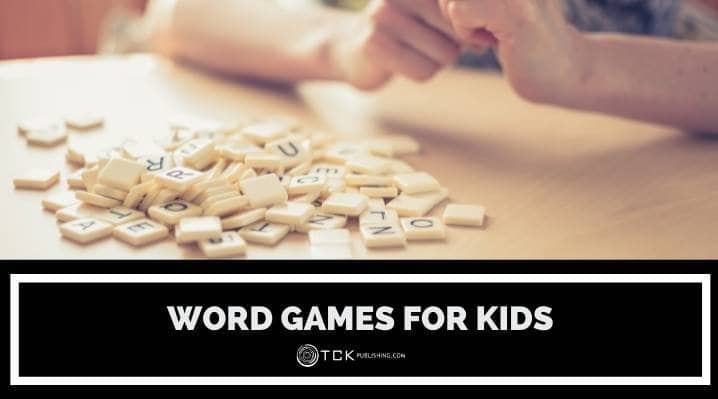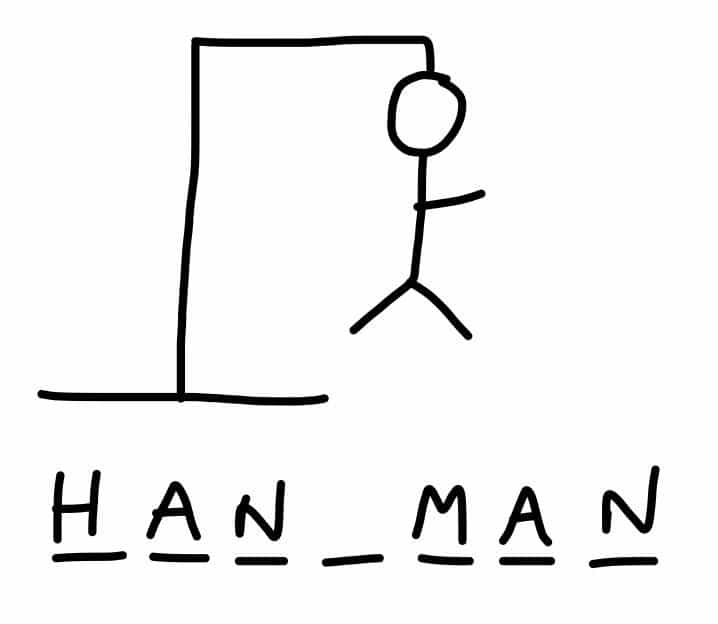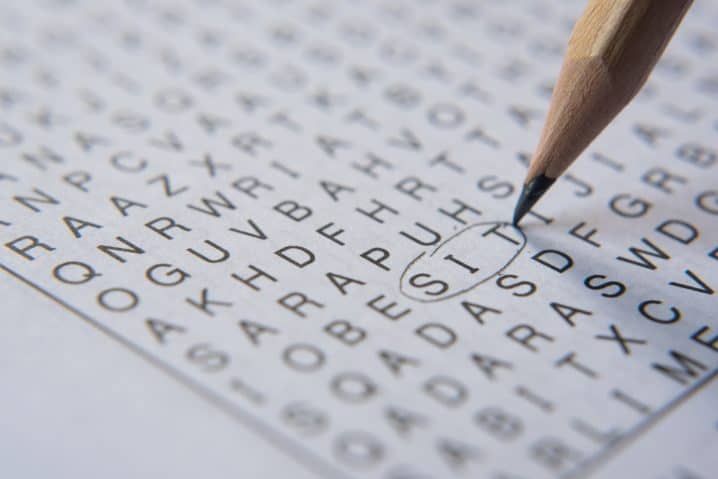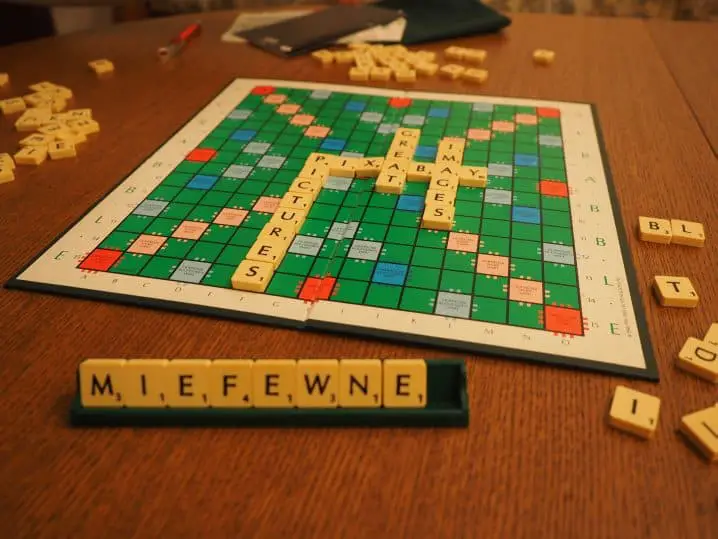
Kids are extremely active, so much that many have trouble staying still for long. This is a challenge many parents and teachers are familiar with. A classroom setting is often too cramped for the curious minds of young children, and even at home, they’re often more interested in playing than studying or reading.
That makes it hard to teach them the things they need to learn—including literacy. So how can you make learning more interesting for them? Fortunately, word games exist, and they combine the best of fun and education.
How Word Games Benefit Kids
Educational games are a godsend for both parents and kids. Not only are they fun activities, but they also promote learning.
With just a little creativity, these games can boost a child’s desire to concentrate and learn. Because kids enjoy games, they’re more likely to commit to the activity, instead of looking for something else to do.
Here are three benefits of word games for kids:
- Word games improve literacy. As they play, kids continuously build their reading and writing skills. They learn the meaning of words, how to spell them, and how to use them properly.
- Word games cultivate problem-solving skills. In playing these games, kids need to think logically and find creative solutions to help them win.
- Word games provide bonding opportunities. Word games are easy to set up and quick to play. For busy parents, it doesn’t take much out of their busy schedules.
Those are only some of the ways that word games can help a developing child. You’ll discover more benefits as your child progresses further.
Traditional Word Games for Kids
Below are a few of the most beloved word games in the world. You’ve probably played these games when you were young. They’re easy to set up, quick to play, and fun for everyone!
1. I Spy
“I Spy” is an easy game to play. There’s no prep required and the only thing you will need is your imagination. It builds on your kid’s vocabulary while giving them a strong mental image of what particular words look like.
It’s best played during monotonous moments such as long car rides or hiking trips. There’s no limit to the players so no one feels left out.
How To Play:
You start the game by looking around, picking an object you can see, and saying something along the lines of “I spy with my little eye, something…” and complete the sentence with the color, shape, or some other adjective that describes the object.
The other players need to guess what you’ve spotted and are now describing. Whoever guesses it right gets to be the next spy.
2. Hangman

Hangman is perhaps the most popular word game in the world. It’s visually stimulating and helps kids practice their spelling skills.
The game can be played by two or more people. One player picks a word, and the other has to guess it before being “hung.”
How To Play:
Player 1 starts the game by choosing a word and indicating lines or spaces for each letter so Player 2 knows how many letters there are. Player 2 will then guess the letters of the word.
If Player 2 guesses right, the letter is written in the spaces until all letters are found. If they guess wrong, Player 1 draws one part of a stick man, which functions as a tally mark. At any point in the game, Player 2 can try to determine what the full word is.
Player 2 wins if they can guess the word before the hangman is completed. They lose when the diagram is done before they can guess correctly.
3. Alphabet
Alphabet is a game that can stump even adults. It makes players think hard about specific words and try out ones they rarely use.
It’s best played as a group activity, preferably in a location where you can all write comfortably. There’s no limit to the players but you will each need a pen and sheet of paper.
How To Play:
Write the letters A-Z on paper and choose a subject. The subject can be as specific or general as you want, such as animals or herbivores. All of you will then need to go through the alphabet and list down words connected to the subject.
For example, if you’re subject was countries, you might pick Australia, Belgium, Cambodia, and so on. The person with the most correct words is the winner.
A no-paper variation you can also do is to have the players take turns going through the alphabet. Anyone who can’t come up with a word for the current letter is out. The last person to get eliminated is the winner.
4. Word Search

Word searches are similar to crossword puzzles. But instead of filling out words that interconnect in a grid, you’ll need to discover the words hidden in the grid instead.
It encourages kids to concentrate on an activity to successfully complete it. It also improves their visual acuity, training them to discover patterns and notice minute details.
How To Play:
There are tons of word searches online or in book form. They come in all sorts of categories, subjects, and themes.
You can also create your own. The size of the grid depends on you but a 10×10 grid is a good place to start. Simply make the grid, add in the words, then place the random letters.
Words can go horizontally, vertically, or diagonally. They can also be spelled out normally, or for an extra challenge, backward. You can also have them overlap.
Write down the list of words needed to be found and place them somewhere near the grid, so the child knows which words to find.
You can make things more interesting by adding in a word that is related to the theme of the puzzle. Don’t include it in the list. Tell your kids you’ve hidden a bonus word and let them try and find it themselves.
5. Words in A Word
Words in a word is a fun game that lets kids discover new words and improve their spelling skills. The aim is for them to create words out of a longer, main word. It’s preferred that the main word is long (at least 8-10 letters), so more words can potentially be created.
There is no limit to how many people play the game. All of the players will also need a pen and paper.
How To Play:
Choose the main word and have everyone write it at the top of their paper. The longer the word is, the better. Then set a timer and start.
The goal of everyone is to write down as many words as they can using the letters from the main word. So if the word was “elephant” then some possible words are pant, eel, late, tape, and so on. Whoever has the most correct words wins.
You can also make the game more interesting by attaching points to every 3, 4, 5-lettered word, and so on. The longer the word, the bigger the point. This will encourage the kids to try and create more complicated words.
6. Scrabble

Scrabble is one of the most popular board games in the world. Not only does it get progressively more challenging, but the mechanics of the game ensures that it doesn’t get repetitive.
The game expands the player’s vocabulary and teaches them how to spell words properly. To win more points, they must either form longer or more complex words.
You will need a scrabble board for this. There are many variations available online. You can also check out our Scrabble tips to improve your skills.
How To Play:
Scrabble requires two to four players. Each player starts with seven tiles marked with a single letter and a score. There are a total of 100 tiles in the game.
The game is played on a board with a 15×15 grid of squares. There are premium squares that either multiply the score of a whole word or the tile placed on it.
The players must form words with the letters available to them and lay them down on the board in crossword fashion. After each turn, they must draw new tiles from the unused pile until they are again holding seven. Each word they play must also be listed down, along with the points they earn.
This goes on until there are no more spaces to play or the supply of tiles is already exhausted. The player with the highest total score is the winner.
Boredom Busters and Literacy Boosters
Kids love to play, and even games that aren’t meant to be educational have their benefits. However, if you’re hoping to build your child’s literacy skills, adding some fun elements can help them feel more engaged and motivated to learn.
Games can improve your child’s cognitive abilities, hand-eye coordination, social skills, and more. Not to mention they’re effective stress and boredom relievers.
The word games listed above are intended to build your child’s literacy skills. As they progress, you’ll notice how they’re able to communicate more effectively, especially with more complex topics. And as they grow, they’ll gain more confidence in how they speak and write.
Each child’s progress will be unique. They might start slow or they may prefer other kinds of educational games. What matters is that you’re there to support them every step of the way. The last thing you want is for them to get frustrated and give up.
Did you find this post useful? Share your thoughts in the comments below!
If you enjoyed this post, then you might also like:
- 11 Brain Training Games to Try Right Now
- Educational Games for Kids: 22 Websites and Board Games for Math, Reading, and Science Skills
- 12 Online Writing Classes for Kids
- 15 Art Books for Kids to Inspire Creativity in Young Minds

Cole is a blog writer and aspiring novelist. He has a degree in Communications and is an advocate of media and information literacy and responsible media practices. Aside from his interest in technology, crafts, and food, he’s also your typical science fiction and fantasy junkie, spending most of his free time reading through an ever-growing to-be-read list. It’s either that or procrastinating over actually writing his book. Wish him luck!
